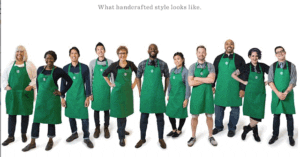
Your brand is how people recognize your company, identify with your mission, and view your product offerings. While it’s important to evaluate your brand (and perhaps make revisions), a complete rebrand may not always be the best option.
Sometimes rebranding efforts make sense. Philip Morris, for instance, opted to rebrand as Altria to distance itself from its major associations with tobacco and cancer. The move made sense for customer retention and recognition, but other rebranding campaigns have left customers confused.
In 2011, Netflix decided to split into two companies: one focused on the DVD-by-mail business, the other on streaming video. In an attempt to differentiate the two, they considered renaming the DVD-by-mail business Qwiskter. It was subsequently deemed confusing and dumb, and Netflix nixed the idea before ever introducing it.
And in 2016, Budweiser’s marketing team decided to change its labels to “America” in an attempt to boost sales leading up to the election. Their full campaign was titled “America Is in Your Hands,” but some customers were confused and others alienated by the company (with headquarters now in Belgium) attempting to literally package America in a bottle.
Evaluate Your Brand’s Equity
It’s crucial for CMOs to evaluate their brands’ equity before embarking on rebranding projects — one wrong move could negatively affect a brand. On the upside, a smart and careful brand position can have an equally powerful, positive effect.
BlueShore Financial, a Canadian financial institution, underwent a brand transformation that spanned 10 years as it worked to redefine its business and the customers it attracted. It was as a monumental brand shift. Originally named North Shore Credit Union, the institution is located in a British Columbia community with roots serving a working-class logging and maritime clientele. But it sought to become a premium financial boutique and attract mass affluent customers as its community shifted to a more upscale neighborhood. This strategic repositioning and branding wasn’t taken lightly; it took time, careful research, and planning.
Every organization faces the challenge of staying on top of internal and external influencers that test and challenge your business strategies, competitive distinction, and value proposition. The rules change, and this is where leaders feel pressure to change and evolve. The degree of adaptation should not be hasty — you must look for the forest through the trees.
Understanding the vitality of your brand before making a major brand shift is critical. Knowing your target audience and what drives their loyalty and consumption of your products is as good as gold; understanding why consumers chose other brands will also inform your future strategies.
How to Analyze Your Brand
Consumers are a delicate blend of finicky and loyal. CMOs need to fully understand the value of their brand and what is most compelling for target audiences. This helps ensure that they’re building on the brand’s relevance and reputation, not accidentally diminishing what makes it special. It also helps you learn what may not be working. Here are three tips for CMOs hoping to identify necessary changes for their brands that won’t affect equity:
Engage your employees and customers first.
Don’t make any significant brand moves in a vacuum. Talk to both internal and external stakeholders through qualitative research methods guided by clear purpose, goals, and objectives the research must achieve.
Begin by learning how employees think and feel about the brand. Involve those leaders and internal influencers necessary for support and buy-in. Then gain deeper knowledge about the external perception of your brand. Get to know your audience better and the opportunities in your space.
Engage your supporters by conducting conversations and gathering meaningful insights. Be open to what’s working, what’s not, how your consumers like to be reached, and how a rebrand might be beneficial.
Investigate assumptions by analyzing your research.
Listen, learn and verify brand insights. Conduct qualitative and quantitative research. It will give you a baseline measurement for ongoing testing and evaluation of how awareness and perceptions are shifting. While your research can’t make critical brand decisions for you, it can help affirm gut instincts and dispel myths.
Brand loyalty is a customer’s emotionally charged decision to buy your product again. Because that type of loyalty is largely based on feelings, you must learn more about what consumers feel and value, as well as what influences them to buy your products over those of your competitors. This will give you a better reference for your brand evolution.
Communicate what is changing and why.
Rebranding requires exceptional storytelling and communication from the very beginning, even before the brand changes are noticed or felt. Include your employees in the rebranding process. Build their awareness and knowledge about why you are choosing to rebrand and what it will mean to the company, to them, and to customers.
Effective branding requires that all of your employees understand the company’s purpose and that they can deliver on it. If your employees are passionate about the brand, customers will feel it, too. For example, Starbucks recently changed its dress code policies to allow employees to dye their hair and wear different types of hats. It both listened to employee feedback and saw a way to connect with its differing customer bases through their employees’ sense of fashion.
Share and celebrate the rebrand with your customers. Talk to them through a variety of mechanisms about why the changes they will soon see were made and how those changes benefit them.
With careful engagement, research, and information, CMOs can determine the best course of action for their brand messages and any possible rebranding efforts.
Karen McGaughey is vice president of client services at Weber Marketing Group.
Related Articles:
Brands Find Ways to Add Value to One-Off Products
Maltesers Foosball Helps Mars Engage Teens
Kind Snacks Says It Time to Pop Your Social Bubble
 Network
Network

